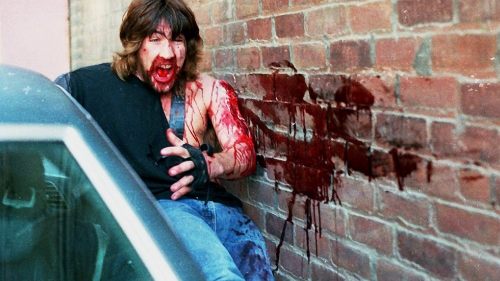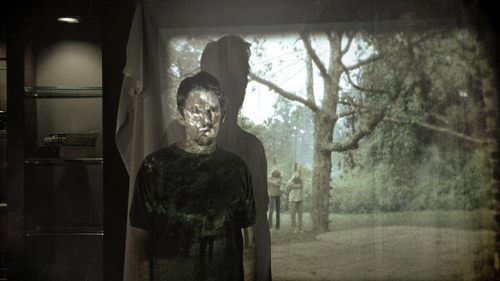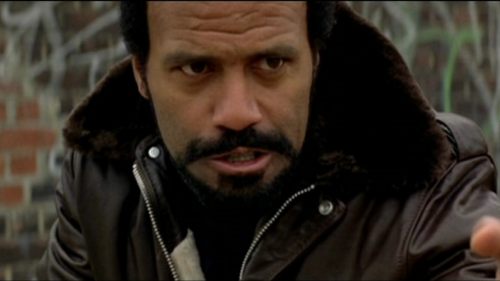The Savage Stack - FEAR CITY (1984)
There’s always going to be – for lack of a better term – a stack of films we’ve been meaning to get to. Whether it’s a pile of DVDs and Blu-rays haphazardly amassed atop our television stands, or a seemingly endless digital queue on our respective streaming accounts, there’s simply more movies than time to watch them. This column is here to make that problem worse. Ostensibly an extension of Everybody’s Into Weirdness (may that series rest in peace), The Savage Stack is a compilation of the odd and magnificent motion pictures you probably should be watching instead of popping in The Avengers for the 2,000th time. Not that there’s anything wrong with filmic “comfort food” (God knows we all have titles we frequently return to when we crave that warm and fuzzy feeling), but if you love movies, you should never stop searching for the next title that’s going to make your “To Watch” list that much more insurmountable. Some will be favorites, others oddities, with esoteric eccentricities thrown in for good measure. All in all, a mountain of movies to conquer.
The seventy-fourth entry into this unbroken backlog is Abel Ferrara and Nicholas St. John's twisted NYC grimecore noir, Fear City...

Abel Ferrara and Nicholas St. John were the kings of the New York underground by '84. Following a stint in the local porn scene - where St. John wrote 9 Lives of a Wet Pussy ('76) for Ferrara to direct - they collaborated on the grimy, pseudo-vérité, punk rock "slasher" The Driller Killer ('79). Driller Killer became a cult hit on the grindhouse circuit - not to mention made the notorious UK “Video Nasty” list in '82 - helping the duo secure financing for their follow-up, Ms. 45 ('81). A massive step up technically, the feminist rape/revenge art film saw Ferrara playing with stylistic tics (the climactic, strobe lit, slow-mo gun slaughter is mesmerizing) while also framing his compositions in a more traditional fashion. His handheld 16mm camera was abandoned, in favor of capturing NYC's notorious garment district with a clearer eye, as St. John penned a far more linear narrative than Driller's fractured, hallucinatory descent into power tool-wielding madness.
Ferrara’s vision of New York is one of constant menace. Around every alley corner and underneath every 42nd Street marquee lurks the threat of violence. None are more susceptible to the preying mentality of the metropolis’ men than the women who unfortunately called the Big Apple home during the ’80s. Whether it’s the girlfriend of a tortured artist in Driller, or Zoë Lund’s titular mute avenger in Ms. 45, the streets and subways aren’t safe. Men are constantly, lecherously looking over the women, causing these noirish grimewave dames to survive by their own codes, even if it drives them to murderous lunacy. Fear City ('84) feels like the culmination of the themes Ferrara and St. John were fascinated with up to this point in their careers, as it follows a pair of adult entertainment managers who see their world upended when a kung fu-obsessed psycho begins slicing up their employees with a sword (all set to the movie's kick ass theme: David Johansen's "New York Doll").
In many ways, Fear City is the slightly less unhinged, East Coast answer to Gary Sherman’s pimps and prostitutes opus, Vice Squad ('82)*. Where that picture saw the neon slime-filled Skid Row streets belonging to a brutal urban cowboy (one of the all-time great screen villains: Wings Hauser's Ramrod) and the cops who battle him, Ferrara eases off the gas a bit and gives us two somewhat decent human beings to root for. Matt Rossi (Tom Berenger) and Nicky Parzino (Jack Scalia) are the owners of Starlite Talent Agency, a “modeling service” who provide the classiest strippers (including Melanie Griffith and Rae Dawn Chong) to the dirtiest clubs in the Five Boroughs (one run by Michael V. Gazzo from The Godfather: Part II ['84]).
Though these two are basically one step away from being straight-up traffickers (Matt even comments that he doesn’t handle money from the girls’ tricks), they treat the women well enough and seem to genuinely look at them as human beings instead of merchandise. So when a maniac begins butchering the girls - each attack becoming progressively more sadistic - the two managers find themselves with their backs against the wall. Hounded by relentless authorities (including Billy Dee Williams' smooth Al Wheeler), money-bleeding club owners, mob financiers, and a stable of scared-shitless strippers, they have no choice but to hit the streets and take matters into their own hands.
While it fits nicely with the films Ferrara and St. John previously crafted together, Fear City is a humungous step up in terms of traditional, linear filmmaking for both artists. There’s a polish that was absent from both Driller Killer and Ms. 45 that still doesn't suppress Ferrara’s more audacious and off-putting tendencies. Though Fear City is ideologically regressive, even by these filth merchants' standards - as the men are all heroes here and the women are basically helpless damsels, clinging to them for care - the picture brims with a newfound sense of confidence and control.
Even Jack Holmes and Anthony Redman’s cutting has a refined rhythm, losing the choppiness of regular Ferrara editor Christopher Andrews. Fear City is also the most stereotypically “New Yawk” of Ferrara and St. John's first three collaborations, as it features the Italian stereotypes and hard-accented rogues that normally make up the players of such hard boiled subway pulp. It’s no wonder Michael Mann would recruit Ferrara to direct two episodes of Miami Vice (“The Home Invaders” and “The Dutch Oven” ['85]), and then invite him back to helm the pilot of his short-lived Crime Story ('86) following this movie's '85 release. The protagonists aren’t common police detectives (though Williams gives one hell of a supporting turn as an ex-vice cop), but Fear City comfortably feels at home with the police procedurals produced in the early to mid ’80s.
Fear City definitely sees Ferrara streamlining his “punk rock” style; nevertheless, the usual perverse weirdness the director peddles definitely peeks through. The way his camera lingers on dancers’ naked bodies is nothing less than leering, and his fascination with off-kilter killers rears its head as the urban samurai stalker becomes more and more engrossed in his evil deeds (naked tai chi is prominently featured). It’s these surrealistic, almost comical touches that make all of the auteur's early movies so eminently enjoyable, as they lend the otherwise ugly proceedings a garishly theatrical flourish.
For all of its "you are here now" window dressing, askew anti-reality also abounds. Buildings loom, steam wafts out of open sewer drains, and the subways are graffiti-plastered tubes of terror, before moments of beauty where the lifelong New Yorker captures his hometown in oddly gorgeous light (a purple-tinged, early-morning moment with Berenger on a pier is the best example of this). Regular Ferrara and Bill Lustig DP James Lemmo (Vigilante ['82]) works absolute magic at times, his camera photographing the neon-slathered nights in all of their disorienting glory.
Ferrara and St. John would collaborate on two more NYC time capsule classics (China Girl ['87] and King of New York ['90]) before applying their unique filmic instincts to other genre endeavors (The Body Snatchers ['95]), and one flat out bomb (the Madonna/Harvey Keitel weird-out Dangerous Game ['93]). Yet Fear City truly marks the end of a loose “trilogy” the two churned out - a street-level look at their hometown as only they knew it. While the movie may not be as experimental as their previous endeavors, it still only could’ve come from the men who helped encapsulate the 42nd Street aesthetic of the '80s.
*For a maximum NYC sex underworld double feature, pair this with William Friedkin's Cruising ('80).



